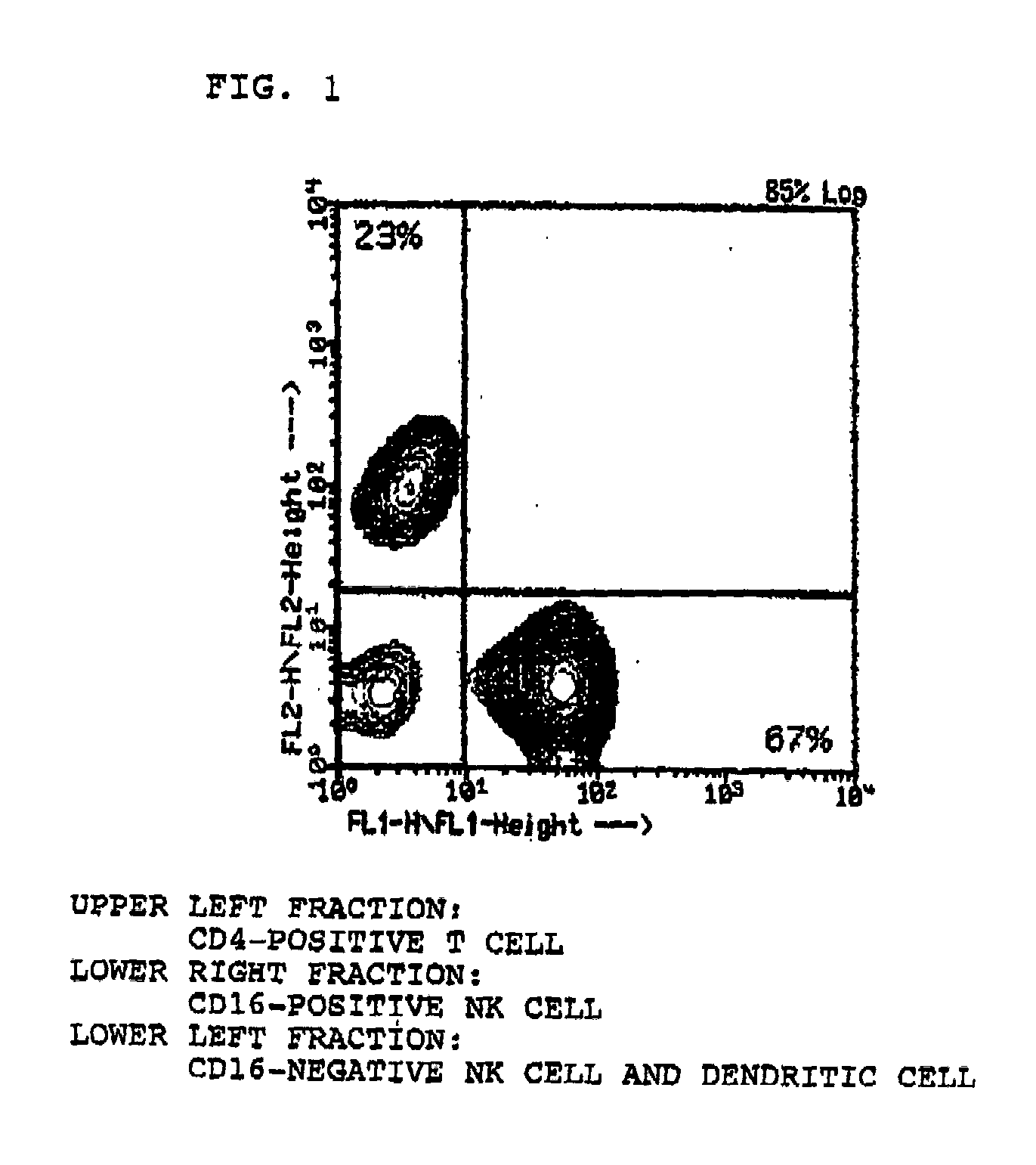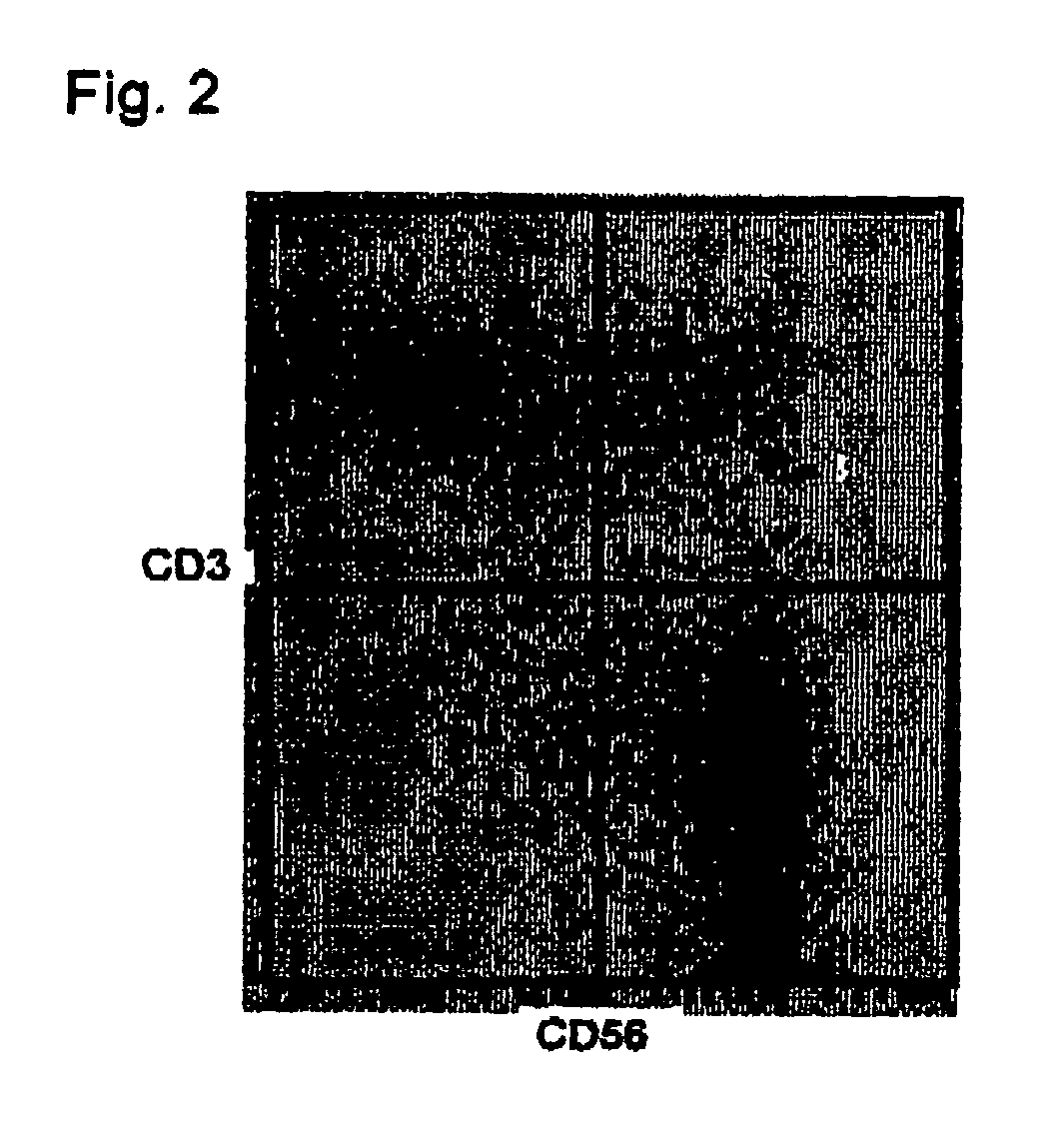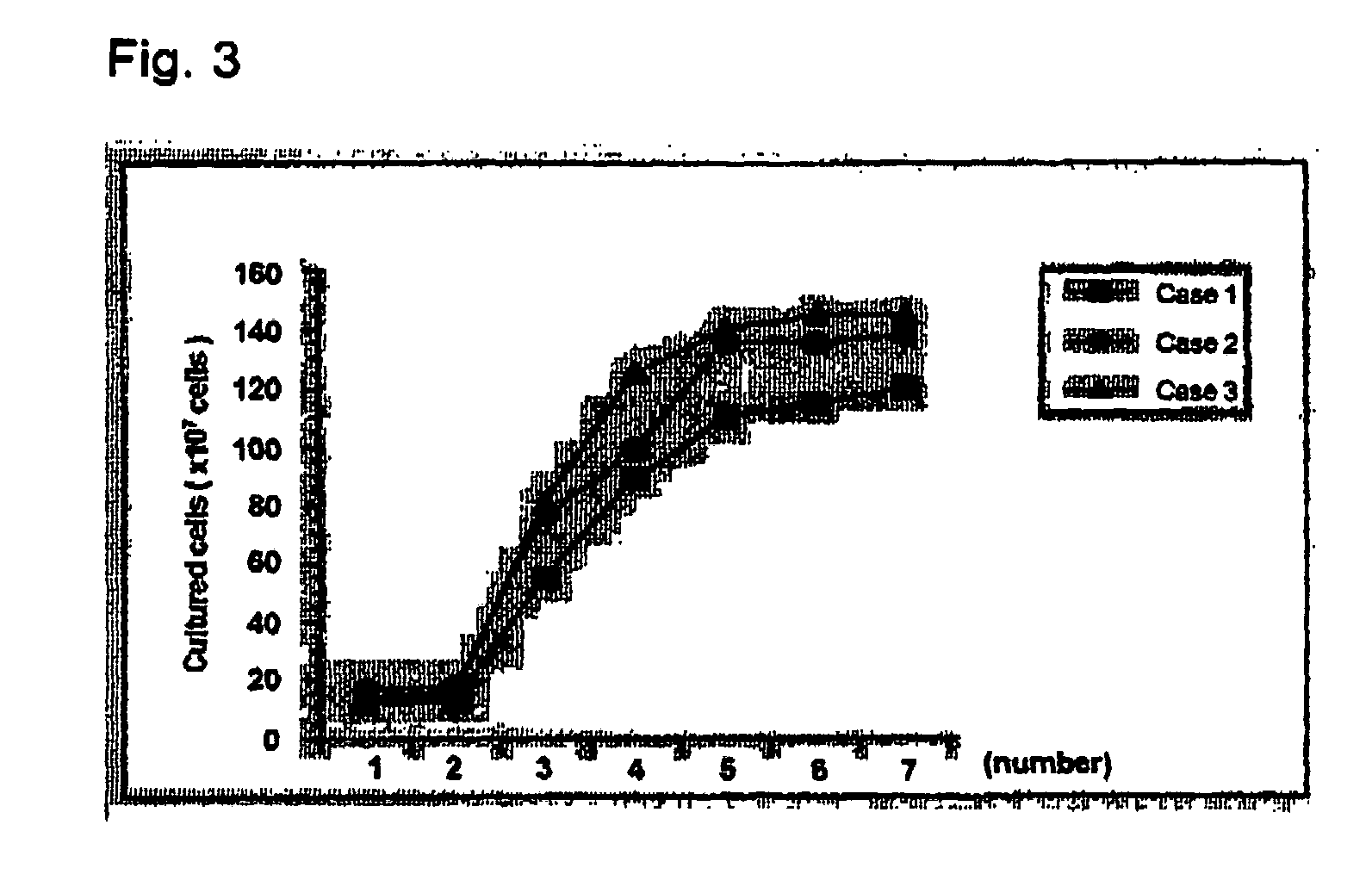Method for in vitro culture of lymphocytes and composition for use in immune therapy
a technology of in vitro culture and immune therapy, applied in the direction of biocide, antibody medical ingredients, genetically modified cells, etc., can solve the problems of limited effect of immune therapy, multiplication of nk cells by, serious side effects
- Summary
- Abstract
- Description
- Claims
- Application Information
AI Technical Summary
Benefits of technology
Problems solved by technology
Method used
Image
Examples
working examples
Example I
[0034] Procedures of Incubating Cancer Cells with Lymphocytes with the B7 Gene Expressed Therein:
[0035] The B7 gene was incorporated into an expression vector having a neomycin-resistant gene, and the expression vector was introduced into K562 cells by means of electroporation method in order to allow the B7 gene to be expressed therein. The K562 cells with the B7 gene expressed therein and the human lymphocytes were cultured in a medium (Hi-Medium.TM.: NIPRO) containing IL-2 to which human serum was added, and they were incubated under 5% CO.sub.2 at 37.degree. C. Although the amount of the culture medium may vary with the amount of the lymphocytes, the human lymphocytes were adjusted to 1-5.times.10.sup.6 cells per milliliter in this example. And the K562 cells with the B7 gene expressed therein were added at the rate of 1 / 100 to 1 / 500. Further, the B7-expression cells were treated with mitomycin or by irradiation so as to cause no amplification. The B7-expression cells w...
example ii
[0042] Preparation of Activated NK Cells
[0043] (1) Preparation of K562 Cells that Express B7 Gene
[0044] The B7 gene was synthesized by RT-PCR using the primer as prepared based on the sequence of a DataBase of The European Molecular Biology Laboratory (EMBL), ENSEEMBL: ENSG00000121594. The B7 gene was incorporated into a vector carrying a neomycin-resistant gene that had been constructed by inserting a promoter of cytomegalovirus and a poly A sequence of SV40 into pSV.sub.2neo (Southern, P. J. and Berg, P., J. Mol. Appl. Genet. 1(4), 327-341(1982)). The expression vector was introduced into K562 cells by means of electroporation method using a gene pulser of Bio-Rad to prepare transformants that express the B7 gene. The transformants were treated with mitomycin or by irradiation to cause no amplification. Further, the transformants were cloned by the limiting dilution-culture method and those having high expression were selected by means of a flowcytometer as K562 cells that express...
example iii
[0052] Effect of the NK Cells Activated with K562 Cells that Express B7 Gene on the In Vivo Activation of the NK Cells in a Living Body
[0053] (1) Administration of Activated NK Cells to a Patient.
[0054] First, 50 ml of a blood sample were drawn from the three patients, and then stimulated as described in Example II for three weeks. The resultant activated NK cells were administered to the same patients in a dose of 100 ml, and, simultaneously, a blood sample was again drawn from the same patients. The resultant blood samples were again stimulated as described in Example II for three weeks. The resultant activated NK cells were administered to the same patients in a dose of 100 ml, and, simultaneously, a blood sample was again drawn from the same patients. This procedure was repeated. The cultured lymphocytes were countered by use of a hemocytometer, and activated NK cells obtained in each stimulation were analyzed by a flowcytometer. The results are shown in FIG. 3. The cultured cel...
PUM
| Property | Measurement | Unit |
|---|---|---|
| adhesion | aaaaa | aaaaa |
| of time | aaaaa | aaaaa |
| cell surface markers | aaaaa | aaaaa |
Abstract
Description
Claims
Application Information
 Login to View More
Login to View More - R&D
- Intellectual Property
- Life Sciences
- Materials
- Tech Scout
- Unparalleled Data Quality
- Higher Quality Content
- 60% Fewer Hallucinations
Browse by: Latest US Patents, China's latest patents, Technical Efficacy Thesaurus, Application Domain, Technology Topic, Popular Technical Reports.
© 2025 PatSnap. All rights reserved.Legal|Privacy policy|Modern Slavery Act Transparency Statement|Sitemap|About US| Contact US: help@patsnap.com



